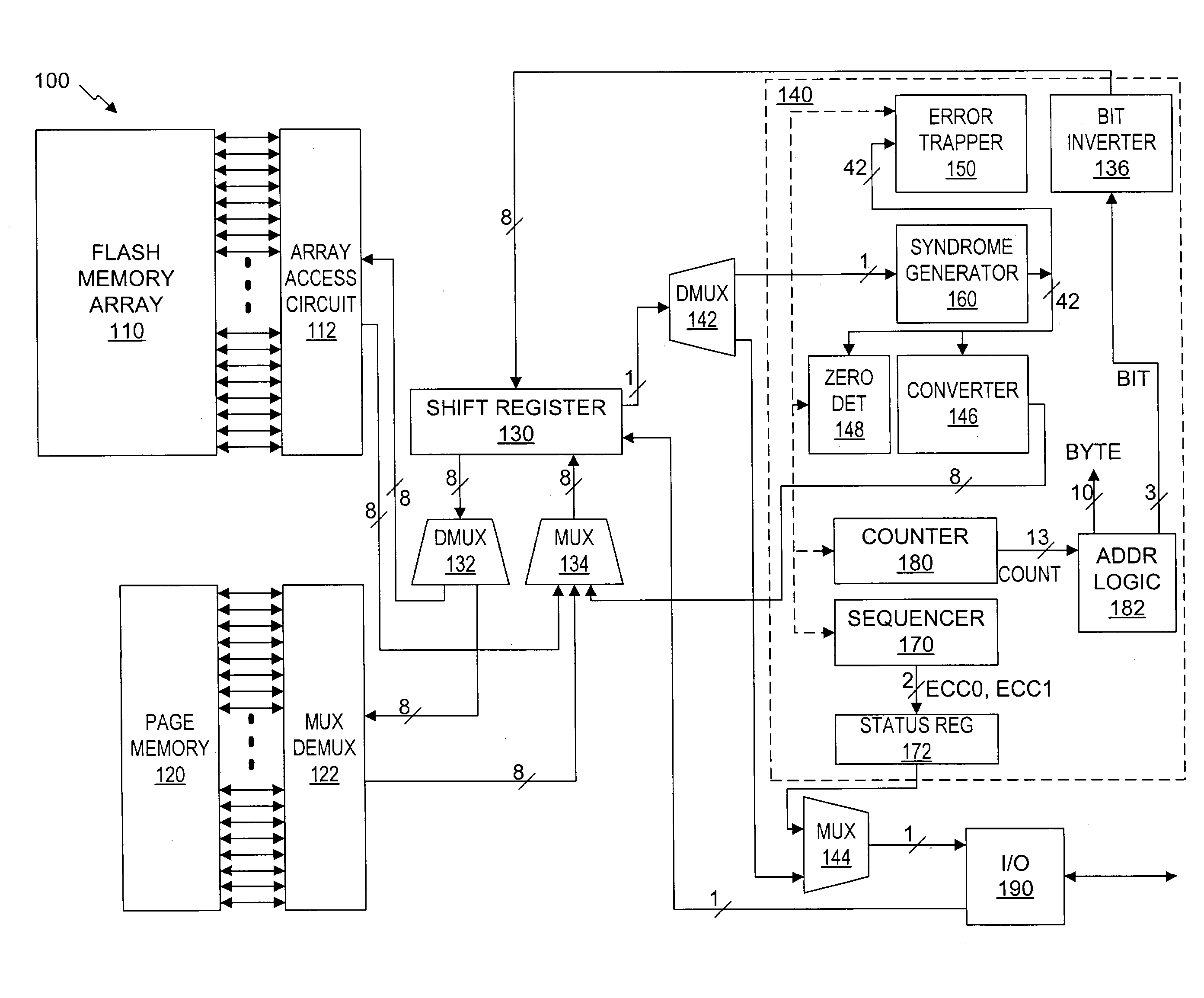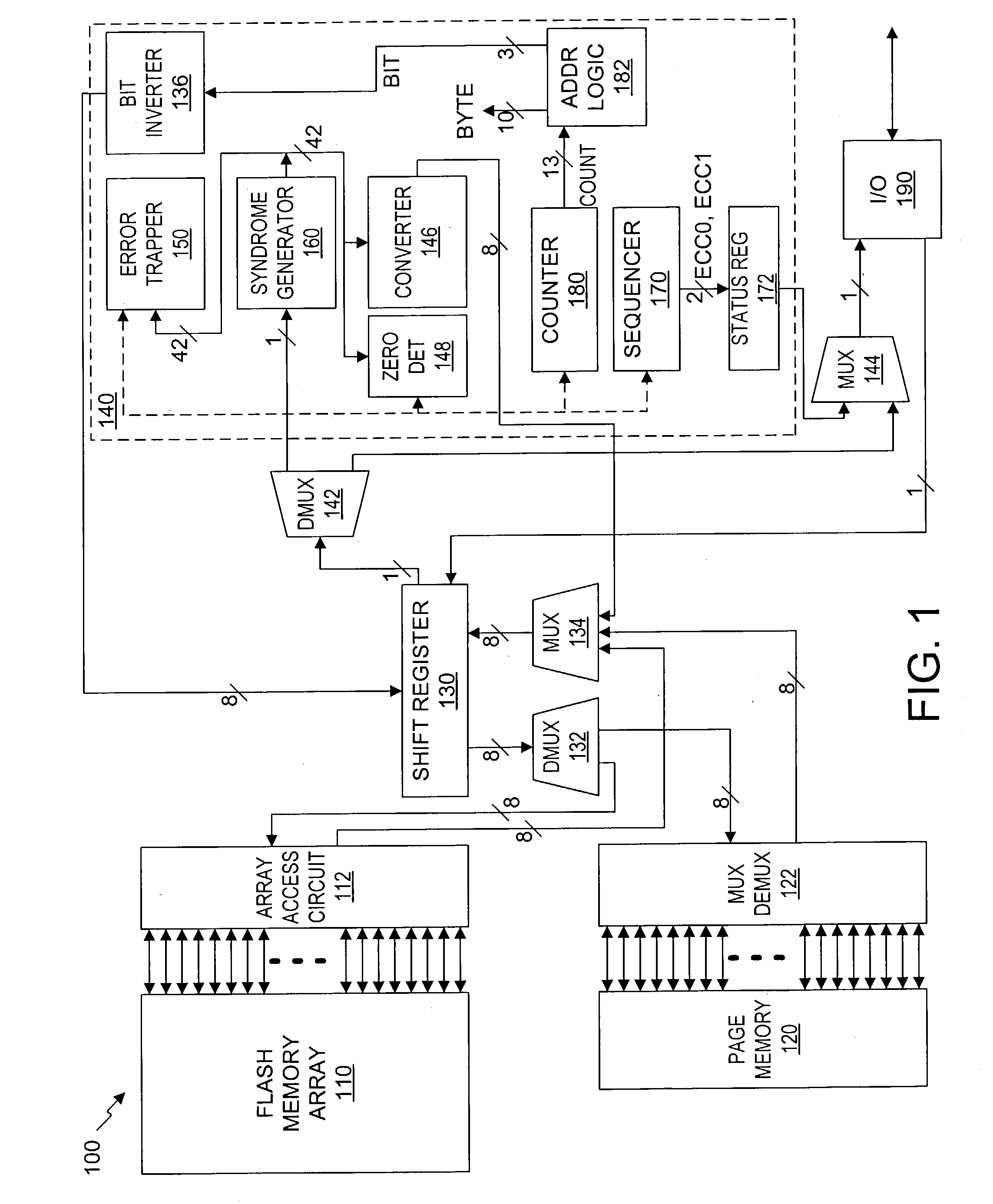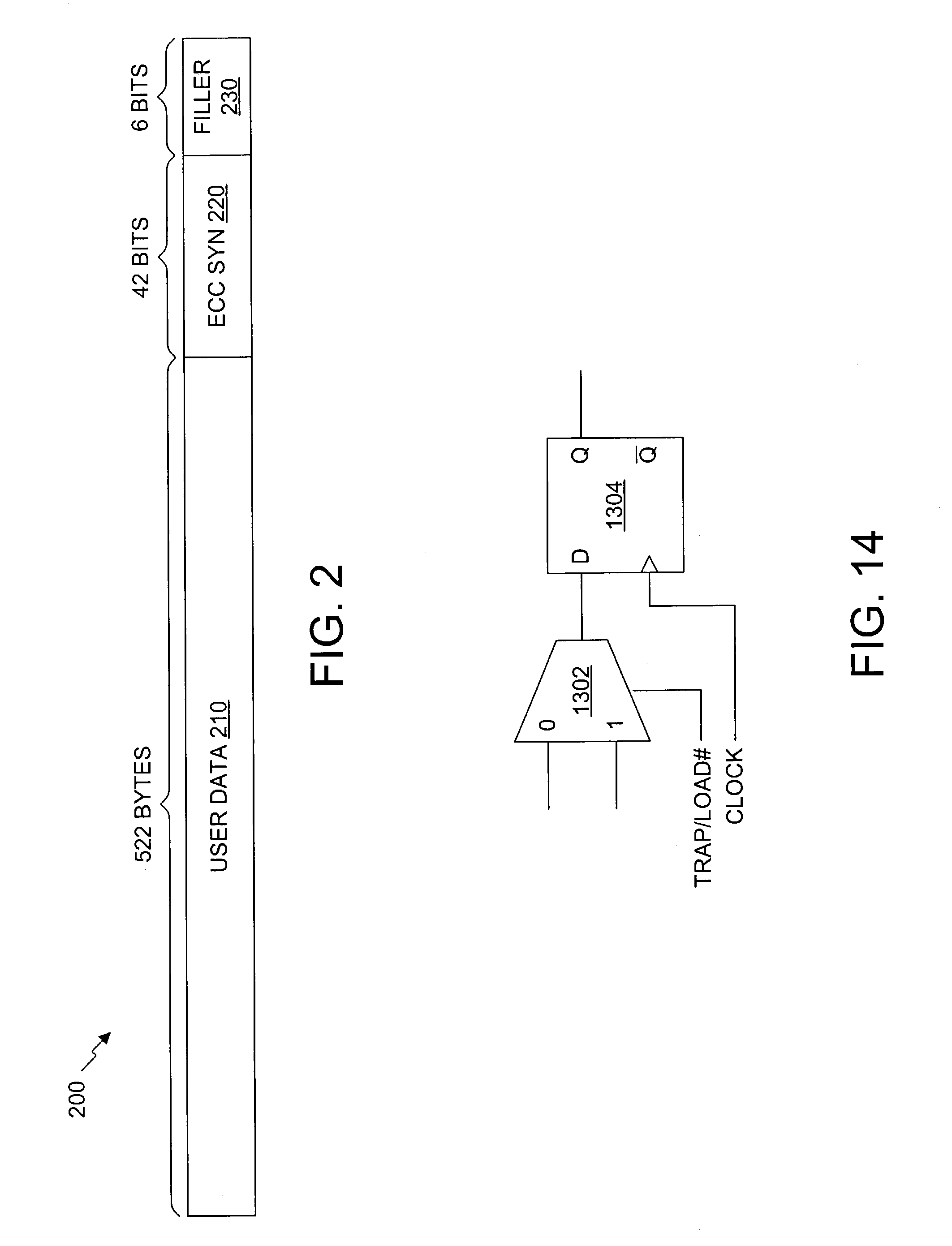Serial flash integrated circuit having error detection and correction
a technology of integrated circuits and serial flash, which is applied in error detection/correction, redundancy data error correction, instruments, etc., can solve problems such as flash memory arrays to loose their value, data errors occasionally occurring in flash memory, and flash memory arrays to lose valu
- Summary
- Abstract
- Description
- Claims
- Application Information
AI Technical Summary
Problems solved by technology
Method used
Image
Examples
Embodiment Construction
[0062] As shown in the illustrative embodiment of FIG. 1, a serial flash memory 100 is provided with an integrated error correction coding ("ECC") system 140 that is used with an integrated volatile page memory 120 for fast automatic data correction (AutoCorrect). Preferably, the ECC code has the capability of correcting any one or two bit error that occurs in a page between writing and reading. One bit corrections are done automatically in hardware during reads or transfer to the page memory 120 (AutoCorrect), while two-bit corrections are handled in external software, firmware or hardware. The use of ECC is optional, so that command sets may include ECC read and ECC write commands as well as non-ECC read and non-ECC write commands. The serial flash memory 100 also includes any suitable internal data path that is controllably configurable for the various operational modes of the serial flash memory 100. An illustrative data path in FIG. 1 includes the various multiplexers 132, 134,...
PUM
 Login to View More
Login to View More Abstract
Description
Claims
Application Information
 Login to View More
Login to View More - R&D
- Intellectual Property
- Life Sciences
- Materials
- Tech Scout
- Unparalleled Data Quality
- Higher Quality Content
- 60% Fewer Hallucinations
Browse by: Latest US Patents, China's latest patents, Technical Efficacy Thesaurus, Application Domain, Technology Topic, Popular Technical Reports.
© 2025 PatSnap. All rights reserved.Legal|Privacy policy|Modern Slavery Act Transparency Statement|Sitemap|About US| Contact US: help@patsnap.com



